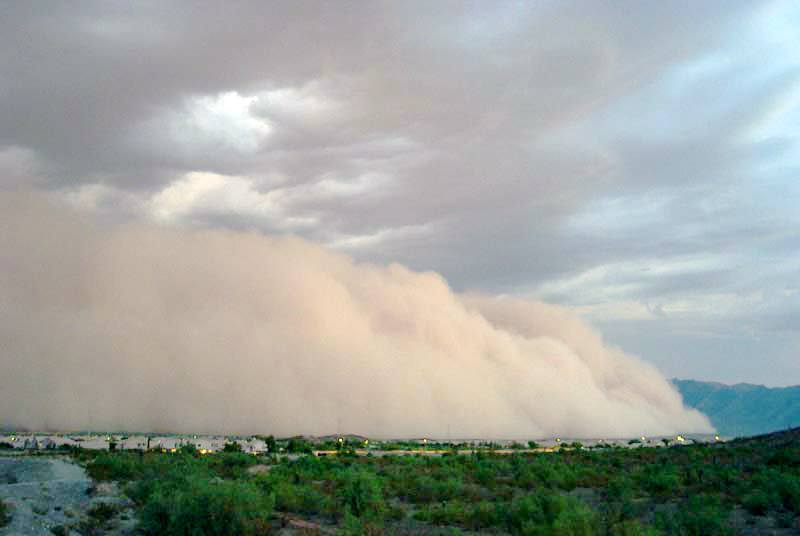Out every part of a building, roofs experience the most wear and tear from the weather. The sun blazes down on Phoenix, AZ roofs 299 days a year (on average) and during summer months, roofs can reach temperatures of over 120 degrees. The months of July, August and September bring heavy monsoons which can cause massive leaks and damage. In the Phoenix winter, low temperatures and heavy moisture may prone roofing materials to freeze and fractures. Your roof’s longevity is reliant upon proper care. We recommend biannual inspections.
If you want to maintain your building’s value and keep it looking sharp, maintenance of your roof is imperative. Unfortunately, because roofs are often out of sight, they can slip out of mind.
Below we outline roof maintenance best practices for a multitude of roofing types.
Maintaining Shingle Roofs
Check for Vegetation Growth
Moss and algae can corrode to your roof’s shingles significantly. If you find moss or algae growth on your roof, remove the outbreak and use a zinc or iron solutions to prevent further growth.
Clean Debris
Debris tend to collect on roofs over time. Inspect your roof for garbage, leaves, and other debris several times a year. Look under A/C units, near your chimney, and other areas such as protruding pipes. Removing debris will ensure that water won’t contribute to your roof’s decay as much.
Check Roof Flashings
Roof flashings are one of the most common ways that water enters a house so is important to check the flashings for signs of damage. Roof Flashings are strips of galvanized steel that are placed over the joints in your roof to prevent leaking. Check for cracks or algae and repair as needed.
Check Shingles
Carefully inspect your shingles for loose tabs. To prevent damage to your building, loose shingles must be repaired right away. Repairing a loose shingle is as easy as applying a little cempent to the bottom of the shingle which will secure it in place.
Check for Overgrown Tree Limbs & Branches
During storms with heavy winds, overgrown branches may bang scrape against the roof which can cause serious damage. Trim surrounding trees to avoid this issue as well as others, like roof rats.
Check the Gutters
Make sure that your gutters are clean so that water can freely flow away from your roof. Water accumulation can significantly decrease the life expectancy of your shingles.
Maintaining Foam Roofs
Foam roofs are topped with an elastomeric material that protect it from ultraviolet sunrays and can help the roof last for more than two and a half decades. The protective roof coat wears out overtime so it is important to recoat the foam roof every five years.
In between coatings there are several precautions you can take so to ensure the longevity of your roof.
Keep The Roof Free From Debris
Because roofs are out of sight, it is important take an inspection of your building’s roof for bird’s nests, tree branches, leaves, and debris at least once a year. If debris is left uncleaned on a foam roof, it can decompose the foam. The best time of year to inspect a roof is after monsoon season as the summer storms ususally leave debris on roofs.
Get Yearly Inspections
A roofer will typically inspect your roof for free and can tell when it’s time to recoat your roof or if any holes need repaired. With foam roofs it’s important to have consistent inspections as the longevity of the roof is directly correlated to the health of the top reflective coating.
Look for Strange Foam Discolorations
When you are removing debris from your roof look around and notice the texture of the roof. The texture of the roof should look a bit like an orange peel. If the texture resembles scrambled eggs or popcorn, the foam has been compromised. If foam is exposed or deteriorating, your likely well past due for a roof re-coating.
Have a Roofer Inspect for Ponding
Ask your roofer to look for water ponding on your roof. If found, your roofing professional can engineer a system to prevent further water pooling.
Maintaining Title Roofs
Check for Debris
Debris can decrease water flow and contribute to algae growth that will change the color of your bricks. Hence forth it is very important to keep your roof clean. Identify debris with a visual inspection around your house and then locate a secure and sturdy later to climb on to your roof. Use a broom to remove leaves, twigs, and other trash. A pressure washer is a great way to remove algae, bird feces, or dirt from your roof.
Clear Away Nearby Tree Foliage
In heavy Phoenix Monsoon storms tree branches can sway fiercely in the wind and cause significant damage to your roof. Ensure that all nearby tree branches are trimmed or risk significant roof repair and possible remodeling costs.
Tile Repair
You should almost always hire a Phoenix Roofing Professional to repair loose tiles. Improperly secured tiles and underlayment can cause major damage to your roof and home.
Remember proper roof care not only ensures the increased longevity of your Phoenix roof, but can also lead to lower utility bills and less remodeling costs.
Castile Roofing offers free Arizona roofing consultations. To increase the longevity of your roof fill in the form to the right.



